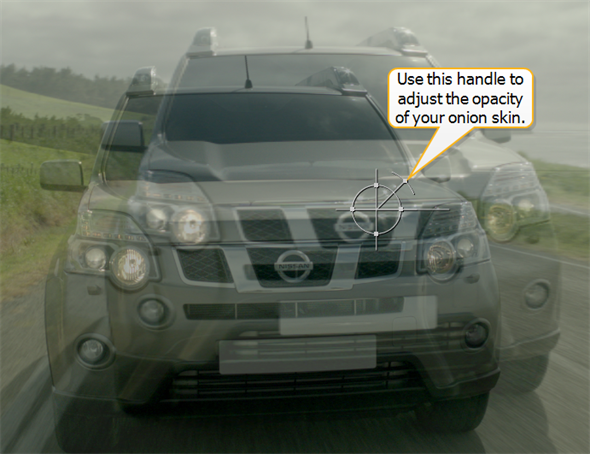Transforming Strokes/Shapes/Groups
To apply spatial transformations to your strokes, shapes, or groups, you can use the controls under the Transform tab. Select a stroke/shape/group from the stroke/shape list and adjust:
• translate - to move the stroke/shape on x and y axis.
• rotate - to spin a stroke/shape around the pivot point. Use center (or Ctrl/Cmd+drag the transform jack) to position the pivot point.
• scale - to resize a spline. Use center (or Ctrl/Cmd+drag the transform jack) to position the pivot point.
• skew X - to skew the spline of your stroke/shape along the X axis from the pivot point. Use center (or Ctrl/Cmd+drag the transform jack) to position the pivot point.
• skew Y - to skew the spline of your stroke/shape along the Y axis from the pivot point. Use center (or Ctrl/Cmd+drag the transform jack) to position the pivot point.
• skew order - to set the order in which skew X and skew Y are applied:
• XY - Skew X is applied before skew Y.
• YX - Skew Y is applied before skew X.
• center x, y - to set the center for rotation and scaling, adjust the values in center x, y.
• extra matrix - enter values you want to get concatenated with the transformation controls above. For more information on concatenating, see How Nodes Concatenate.
Note: While you can drag the matrix to another node’s matrix to easily use the values elsewhere, you shouldn’t try, for example, to drag a 4 by 4 matrix on a 3 by 3 matrix, as doing that might have unexpected results.
Alternatively, you can also use the transform handle (shortcut T) in the Viewer to transform elements. To transform an entire stroke/shape, you need to use the transform handle jack, and to transform points in a stroke/shape, you should use the transform box.
The transform handle appears as a transform jack only when the Transform tab is active, when any of the other tabs in the RotoPaint properties panel are active, the transform handle appears as a box.
To Transform a Stroke/Shape Using a Transform Handle Jack:
| 1. | Click one of the Select tools |
| 2. | Make sure hide transform handles |
| 3. | Select a stroke/shape by clicking it in the Viewer or by selecting it in the stroke/shape list. A transform handle jack appears. |
| 4. | Use the jack to rotate, scale or skew your stroke/shape. |
To Transform Points Using a Transform Box:
| 1. | Click the Select All |
| 2. | Make sure hide transform handles |
| 3. | Select points in a stroke/shape with Shift+click or by clicking and dragging across the points you want to select. A transform box appears. |
| 4. | Use the box to rotate, scale or skew your stroke/shape, or points. |
| 5. | To corner pin using the transform box, press Ctrl/Cmd+Shift and drag the transform box points to move them. |
Note: Transforming points changes the actual point position, while transforming an entire stroke/shape/group changes transformation applied to the point positions.
Tip: If you’d like to hide the transform box when moving a selection, enable hide transform handles on move ![]() in the RotoPaint tool settings. This may make it easier to correctly position your selection.
in the RotoPaint tool settings. This may make it easier to correctly position your selection.
To Transform Onion Skin Source
When cloning or revealing, you can use the onion skin control on the RotoPaint tool settings to view and transform your source input on top of your foreground. You can also use onion skinning if you’re drawing a stroke/shape with a separate input as the source. To adjust onion skin:
| 1. | With your stroke/shape tool selected, check the onion box in the RotoPaint tool settings. |
| 2. | Adjust the opacity of the onion skin and transform your source by using the onion skin transform overlay in the Viewer. |
|
|
| Onion skin transform handle. |

